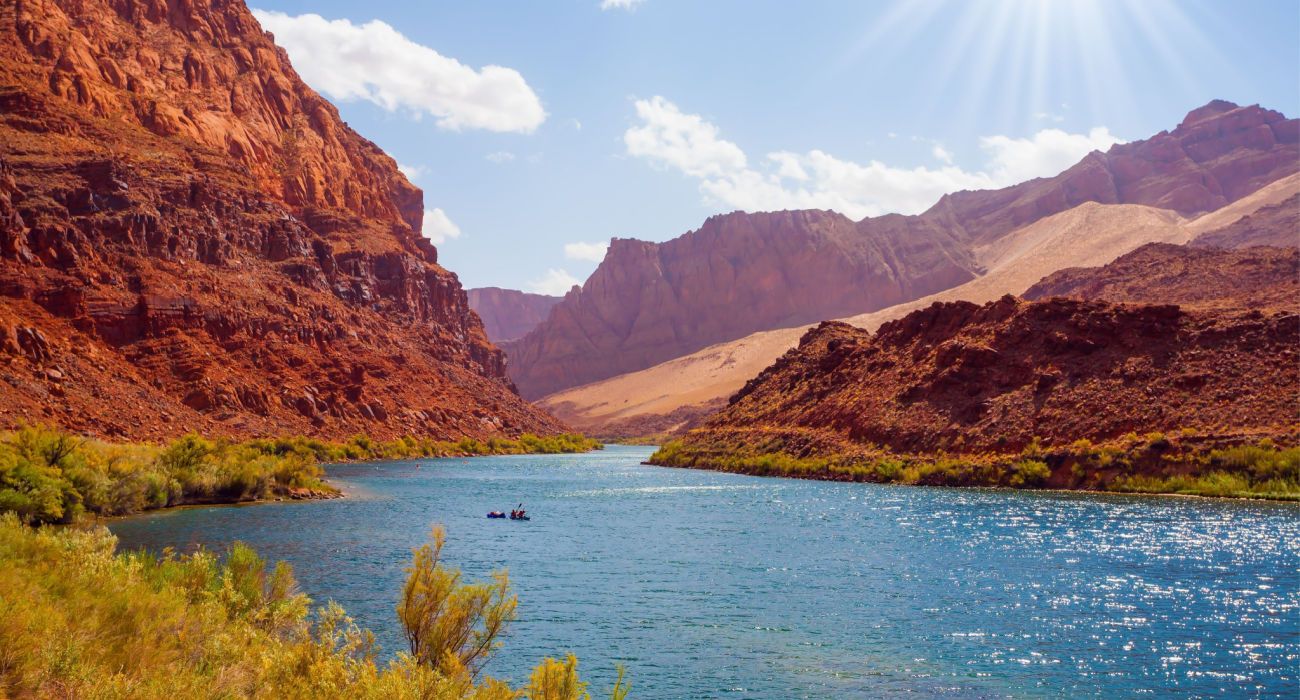Quick Links
The Grand Canyon is one of the greatest natural attractions in the world. At the same time, it forms one of the greatest natural barriers in the United States. There are very few bridges or ferry crossings across the Colorado River, resulting in the northernmost part of Arizona being very isolated from the rest of the state. One of the historic crossing points of the Grand Canyon was at Lees Ferry.
Not all the great attractions of the Grand Canyon are in the Grand Canyon proper. Another must-see of the region is the Havasu Falls on the Havasupai tribal lands. Perhaps the most entertaining way to visit the Grand Canyon is by taking the Grand Canyon Railway and experiencing a good old Wild West "train robbery" staged for the kids.
Significance & Wild West History Of Lees Ferry
Lees Ferry is located on the Colorado River, around 7.5 miles southwest of Page. It is the only place in hundreds of miles where one can easily cross the Colorado River from both sides. It is a very historic crossing point and once served as an important river crossing.
The first known successful crossing at Lees Ferry was made in 1864 by the Mormon pioneer Jacob Hamblin. The backstory to this is that he was on a mission to warn the Navajo to stop raiding into Utah, taking livestock, and threatening Mormon expansion. They deemed the land to be "unsettled" territory and theirs for the taking under the ideas of Manifest Destiny, according to the National Park Service.
The conflict between the Paiute (also in the region) and the Mormons escalated, and in the winter of 1869-1870, the Mormons posted guards at Lees Ferry (then called Pahreah Crossing). Besides having a military outpost in the 19th century for settlements in Utah. It was also a center of gold-seeking for a time.
The Ill-Fated Historic Lee's Ferry Of The Colorado River
From the mid-19th century, it was home to a famous ferry operated by John Doyle Lee. For 55 years, the ferry serviced folks traveling across the Grand Canyon, but with the dawn of the automobile, it soon became outdated and insufficient. In response, the historic Navajo Bridge was built to allow for better automobile travel.
- Ferry Launched: 1873
Lee's Ferry was launched on January 11, 1873 (even though, at the time, the roads on either side of the river hadn't been built). Since by this time, colonists were arriving by wagonload. A fort was built there in 1874 in the face of mounting tensions between the Mormons and the Navajo. Like so many forts, it soon turned into a trading post.
Lees Ferry Fort is one of the few historic buildings there still intact.
John D. Lee was later executed for his role in leading the Mormon-led Mountain Meadows Massacre (they were disguised as Native Americans) of the Baker–Fancher emigrant group on their way to California.
The ferry was taken over by his wife and family, and it contained to operate until 1928, when it sank just before the Navajo Bridge was completed (a major nearby attraction).
Why Lee's Ferry Is A Famous Attraction In The Grand Canyon Today
Just a short distance upstream, the Glen Canyon Dam impounds the Colorado River and completely regulates the water flow. Glen Canyon is one of Utah's top canyons and is very much worth visiting if given the chance. Today Lees Ferry is a favored beginning point for whitewater rafting trips down the Colorado River through the Grand Canyon. It is also a great spot for fishing and boat launches.
Today people come to see the nearby historic Navajo Bridge, the old Lees Ferry trading post and to drive down to the Colorado River.
- Top Activities: Fishing & River Rafting
Lees Ferry is the official beginning of the Grand Canyon National Park and is managed by the National Park Service. Refer to the National Park Service for launching a boat at the site.
It is also the endpoint for canyoneering trips down the Paria River. The large rainbow trout at Lees Ferry draws thousands of anglers every year.
The main access to the site is by Lees Ferry Road, which diverges from US Route 89A Marble Canyon nearby.

